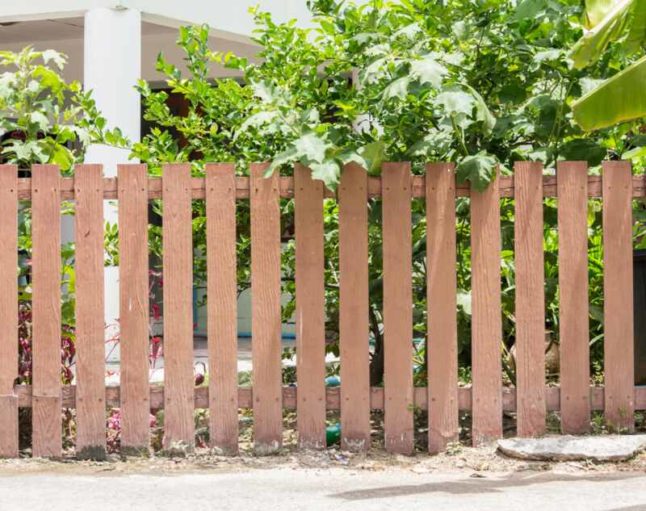All Categories
Featured
Various areas have differing laws, and understanding what's called for will certainly assist make sure that your fence is lawful, secure, and developed according to neighborhood requirements. Below's a guide to assist you navigate the permitting procedure for fence installation.
Why Are Permits Called for? Permits are needed to make sure that the installation of your fence fulfills regional building ordinance and zoning legislations. These laws remain in area to keep the safety, appearance, and performance of buildings in your area. In addition, allows help prevent disputes with neighbors pertaining to property lines, fence height, and various other architectural information.
Neighborhood authorities need permits to monitor points like exposure at junctions, public security, and prospective damage to energies like water pipes or electrical lines. The process assists maintain your fencing task certified with safety and legal criteria.
Kinds Of Permits You Might Need. The exact authorizations needed can differ depending upon your area and the specifics of your job. Below are the most typical kinds of licenses you might require:
Structure Permit. Several cities and regions require a structure permit for fences that go beyond a specific height, commonly over 6 feet. This license makes certain that your fence abides by architectural standards, particularly if it's made from certain products such as concrete, metal, or brick. Structure licenses are also essential when your fence impacts the general landscape, like creating an or blocking a sightline.
Zoning Authorization. Zoning permits are issued to guarantee that your fence adheres to regional zoning legislations. These legislations might regulate where fencings can be put on your residential property (e.g., front, side, or backyard), just how high they can be, and whether they can be set up near sidewalks or streets. Zoning legislations are established to protect the total visual appeals of neighborhoods and preserve traffic safety.
Setback License. Some areas have obstacle policies that determine exactly how far a fencing has to be from the property line, roadway, or particular public areas. Obstacle licenses are made to make certain that your fencing does not conflict with neighboring residential or commercial properties or public locations. A home survey might be required to confirm residential property lines before getting this sort of authorization.
HOA Approval. You may require to obtain approval from the HOA before installing a fencing if you live in an area regulated by a Homeowners Association (HOA) HOAs usually have rigorous guidelines regarding the kind of fence allowed the neighborhood, including its color, elevation, and product. Constantly consult the HOA prior to beginning your job to avoid any disputes.
Exactly How to Request a Fence Permit. The process for getting an authorization usually involves numerous actions:
Research Resident Regulations. Begin by checking your city or area's website to discover the specific demands for fence setup. You might require to go to the regional planning or building division in person for more in-depth info.
Prepare Your Application. A lot of cities will certainly call for an application, that includes information concerning your prepared fence, such as:
![]()
The kind of fencing product (wood, vinyl, chain-link, etc) The prepared elevation of the fence. The location and dimensions of the fencing. A home study (to confirm home lines) Send the Application. After completing the application, submit it to the local structure or zoning office. You might be required to pay a charge relying on your area and the dimension of your fence. Charges can differ, however they typically cover the expense of refining your request and examining your plans.
Await Authorization. When your application is sent, the regional authorities will certainly assess your plans to ensure they meet zoning and constructing demands. This procedure can take anywhere from a couple of days to a number of weeks, depending on the complexity of the task and the volume of permit requests in your area.
![]()
If Necessary),Evaluation (. In many cases, you may need to arrange an examination after the fencing is installed to ensure it fulfills the needed requirements. Your local workplace will certainly let you recognize if this action is necessary.
When You Do Not Required an Authorization. Not every fencing installment needs an authorization. Some circumstances where you might not require an authorization consist of:
Mounting a fencing that's under a specific height (typically 3-4 feet for front backyards) Replacing an existing fence with one that coincides height and product. Installing a short-lived fence (e.g., for construction or gardening) Even if your project appears little, it's always recommended to check with regional authorities to make sure you're following the right process.
Consequences of Not Obtaining an Authorization. Setting up a fence without the needed license can result in considerable consequences, consisting of fines, removal of the fencing, and costly reinstallation. In many cases, local authorities may need you to modify the fencing if it does not fulfill code needs. Additionally, not acquiring a permit might create disputes with next-door neighbors, specifically if the fencing is positioned improperly or violates local elevation guidelines.
Verdict. Before installing a fence, it is essential to research the specific allowing requirements in your location. If a license is required and to ensure that you're following the appropriate procedure, get in touch with your neighborhood building or zoning division to find out. By securing the correct permits, you'll ensure and prevent lawful problems that your fencing installation is risk-free, certified, and problem-free.
Why Are Permits Called for? Permits are needed to make sure that the installation of your fence fulfills regional building ordinance and zoning legislations. These laws remain in area to keep the safety, appearance, and performance of buildings in your area. In addition, allows help prevent disputes with neighbors pertaining to property lines, fence height, and various other architectural information.
Neighborhood authorities need permits to monitor points like exposure at junctions, public security, and prospective damage to energies like water pipes or electrical lines. The process assists maintain your fencing task certified with safety and legal criteria.
Kinds Of Permits You Might Need. The exact authorizations needed can differ depending upon your area and the specifics of your job. Below are the most typical kinds of licenses you might require:
Structure Permit. Several cities and regions require a structure permit for fences that go beyond a specific height, commonly over 6 feet. This license makes certain that your fence abides by architectural standards, particularly if it's made from certain products such as concrete, metal, or brick. Structure licenses are also essential when your fence impacts the general landscape, like creating an or blocking a sightline.
Zoning Authorization. Zoning permits are issued to guarantee that your fence adheres to regional zoning legislations. These legislations might regulate where fencings can be put on your residential property (e.g., front, side, or backyard), just how high they can be, and whether they can be set up near sidewalks or streets. Zoning legislations are established to protect the total visual appeals of neighborhoods and preserve traffic safety.
Setback License. Some areas have obstacle policies that determine exactly how far a fencing has to be from the property line, roadway, or particular public areas. Obstacle licenses are made to make certain that your fencing does not conflict with neighboring residential or commercial properties or public locations. A home survey might be required to confirm residential property lines before getting this sort of authorization.
HOA Approval. You may require to obtain approval from the HOA before installing a fencing if you live in an area regulated by a Homeowners Association (HOA) HOAs usually have rigorous guidelines regarding the kind of fence allowed the neighborhood, including its color, elevation, and product. Constantly consult the HOA prior to beginning your job to avoid any disputes.
Exactly How to Request a Fence Permit. The process for getting an authorization usually involves numerous actions:
Research Resident Regulations. Begin by checking your city or area's website to discover the specific demands for fence setup. You might require to go to the regional planning or building division in person for more in-depth info.
Prepare Your Application. A lot of cities will certainly call for an application, that includes information concerning your prepared fence, such as:

The kind of fencing product (wood, vinyl, chain-link, etc) The prepared elevation of the fence. The location and dimensions of the fencing. A home study (to confirm home lines) Send the Application. After completing the application, submit it to the local structure or zoning office. You might be required to pay a charge relying on your area and the dimension of your fence. Charges can differ, however they typically cover the expense of refining your request and examining your plans.
Await Authorization. When your application is sent, the regional authorities will certainly assess your plans to ensure they meet zoning and constructing demands. This procedure can take anywhere from a couple of days to a number of weeks, depending on the complexity of the task and the volume of permit requests in your area.

If Necessary),Evaluation (. In many cases, you may need to arrange an examination after the fencing is installed to ensure it fulfills the needed requirements. Your local workplace will certainly let you recognize if this action is necessary.
When You Do Not Required an Authorization. Not every fencing installment needs an authorization. Some circumstances where you might not require an authorization consist of:
Mounting a fencing that's under a specific height (typically 3-4 feet for front backyards) Replacing an existing fence with one that coincides height and product. Installing a short-lived fence (e.g., for construction or gardening) Even if your project appears little, it's always recommended to check with regional authorities to make sure you're following the right process.
Consequences of Not Obtaining an Authorization. Setting up a fence without the needed license can result in considerable consequences, consisting of fines, removal of the fencing, and costly reinstallation. In many cases, local authorities may need you to modify the fencing if it does not fulfill code needs. Additionally, not acquiring a permit might create disputes with next-door neighbors, specifically if the fencing is positioned improperly or violates local elevation guidelines.
Verdict. Before installing a fence, it is essential to research the specific allowing requirements in your location. If a license is required and to ensure that you're following the appropriate procedure, get in touch with your neighborhood building or zoning division to find out. By securing the correct permits, you'll ensure and prevent lawful problems that your fencing installation is risk-free, certified, and problem-free.
Latest Posts
Why Wood Secure Fencing from Washington Fencing
Published Apr 20, 25
1 min read
Change Your Home with High Quality Floor Covering Solutions
Published Apr 19, 25
1 min read
Attain Your Economic Dreams with WyHy's Wealth Management Solutions
Published Apr 19, 25
1 min read